|
|
|
| Chongqing University's intelligent and connected car driving |
A few days ago, Huahai Technology delivered a customized intelligent networked car driving simulation system for Chongqing University. The system is located in the Human-Computer Interaction and Wearable Laboratory of the Automobile Collaborative Innovation Center of Chongqing University. The simulation system will help researchers at Chongqing University to carry out research and development in the field of intelligent connected vehicles, which are used to design and evaluate human-computer interaction systems, wearable devices, and scientific research in the fields of driving safety, human factors engineering, and Internet of Vehicles. And talent training.
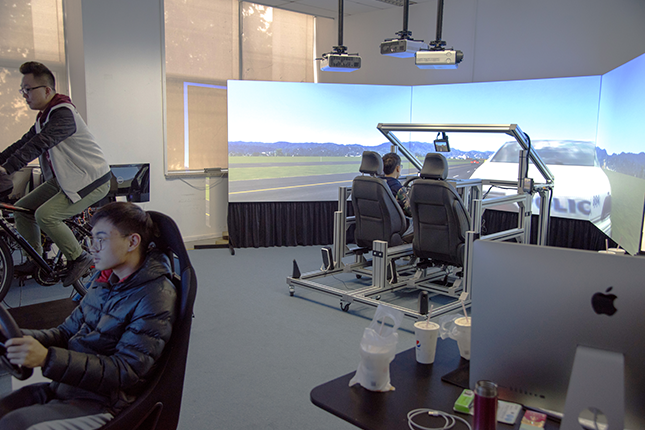
Three simulators networked driving simulation in the same traffic scene
This solution is provided by the United States Realtime (abbreviation: RTI) and its exclusive Chinese partner Beijing Jiuzhou Huahai Technology Co., Ltd. (abbreviation: Huahai Technology) for the research needs of intelligent networked vehicles and human-computer interaction in Chongqing University, providing a complete turnkey project solution And efficient and high-quality local after-sales service. The intelligent networked vehicle driving simulation experiment platform in this scheme includes three parts: a single-seater driving simulator, a two-seater driving simulator and a bicycle simulator. The simulation platform can realize the simulation of road traffic conditions, combined with high-precision multi-body vehicle dynamics models, has a friendly human-computer interaction interface, facilitates the study of driving behavior, and can realize network sharing of road scenes. The simulator has been loaded with RTI provided Auto-driving algorithm can realize vehicle auto-driving simulation.
According to the site facilities provided by Chongqing University, Huahai Technology plans the layout of the laboratory for Chongqing University as follows:
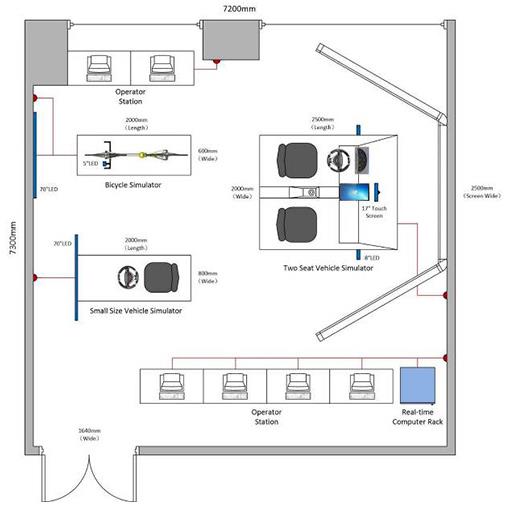
Laboratory layout
A two-seater simulator, a single-seater simulator, a bicycle simulator and laboratory monitoring equipment are placed in the room shown above.
After debugging by professional technicians, the equipment has been delivered for acceptance. As shown below:
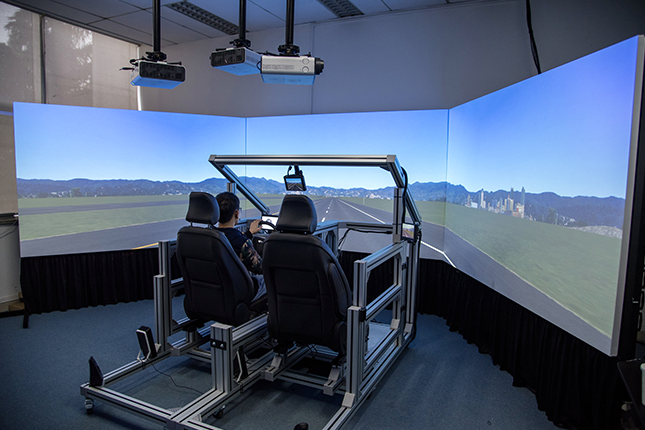
Two-seater vehicle simulator
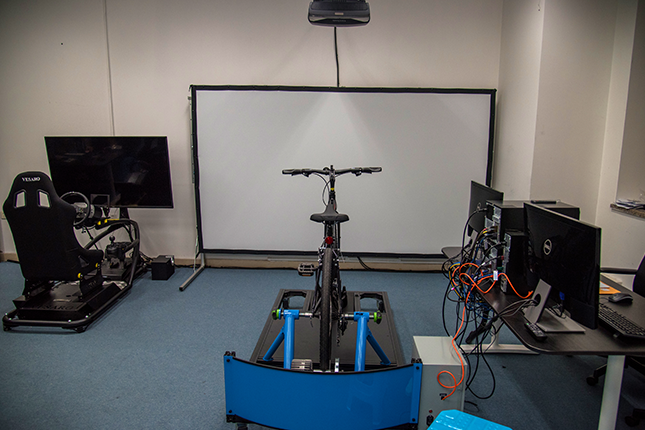
Bike simulator and single seat vehicle simulator
The main users, after a week of training, have been able to complete the basic operation of the equipment and the use of software:
• Basic operation of RTI series software;
• Use SimCreator to create custom software models;
• Introduce the SimCreator model used in the project, and be able to modify and secondary development;
• Build a general visualization database (3D scene) in SimVista;
• Use JavaScript to add behaviors to the visual database.
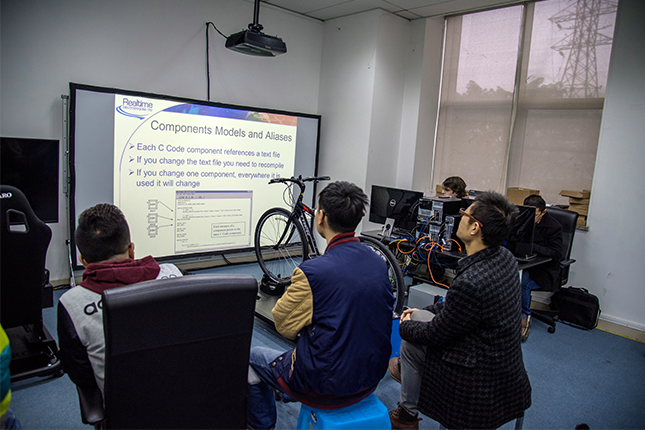
According to the project plan, the laboratory has been able to complete the following research tasks:
• Research on human-computer interaction of a single vehicle in a designated driving environment;
• When three simulators are connected to work in the same traffic scene, high real-time simulation simulation;
• Development and research of central control instrumentation and its impact on driver behavior;
• Combined with other human factor analysis equipment, such as the user-designated D-LAB system, interactive communication via TCP/IP to jointly analyze driver behavior;
• The impact of the autonomous vehicle on the driver’s behavior of the vehicle and the impact on other vehicles, etc.
The driving simulator (virtual proving ground) can provide technology throughout the entire vehicle development process (from design to evaluation). In the design phase, the SimVehicle LT software tool can depict many kinds of cars through modeling and simulation. SimCreator and SimObserver of RTI play the main roles in simulation and operation. SimVista can draw various road and traffic scenes through graphical modeling. SimCreator is a vivid, clear-level real-time simulation and modeling system that can develop distributed simulation models quickly and conveniently. The menus and toolboxes provided by ExACCT can facilitate various studies and experiments.

|
